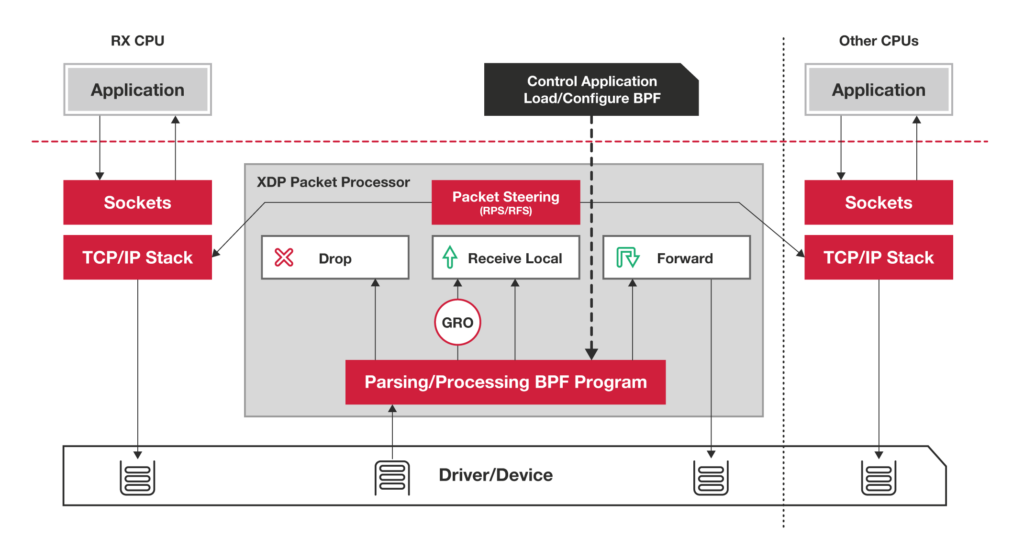Introduction to XDP
XDP or eXpress Data Path provides a high performance, programmable network data path in the Linux kernel as part of the IO Visor Project. XDP provides bare metal packet processing at the lowest point in the software stack which makes it ideal for speed without compromising programmability. Furthermore, new functions can be implemented dynamically with the integrated fast path without kernel modification. Other key benefits of XDP includes the following:
- It does not require any specialized hardware
- It does not required kernel bypass
- It does not replace the TCP/IP stack
- It works in concert with TCP/IP stack along with all the benefits of BPF
XDP Packet Processing Overview
The XDP packet process includes an in kernel component that processes RX packet-pages directly out of driver via a functional interface without early allocation of skbuff’s or software queues. Normally, one CPU is assigned to each RX queue but in this model, there is no locking RX queue, and CPU can be dedicated to busy poll or interrupt model. BPF programs performs processing such as packet parsing, table look ups, creating/managing stateful filters, encap/decap packets, etc.

The extensibility of BPF is kept intact with packet inspection and manipulation functions, flow and table lookups, and application processing leveraging BPF programs which are portable to userspace and other operating systems.
Resources
An overview of XDP by Alexei Starovoitov and Tom Herbert of Facebook:
A video of Dave Miller on XDP at Net Dev 1.2:
A video of Brenden Blanco and Yunsong Lu on XDP with a live demo of 20Mpps performance:
A presentation by Brenden Blanco on XDP performance:
A presentation by Jesper Brouer of Red Hat:
A video by Tom Herbert of Facebook:
Try our XDP functionality with a Vagrant based vm here:
Use Cases
Use cases for XDP include the following:
- Pre-stack processing like filtering to support DDoS mitigation
- Forwarding and load balancing
- Batching techniques such as in Generic Receive Offload
- Flow sampling, monitoring
- ULP processing (i.e. message delineation)
XDP and DPDK
XDP is sometimes juxtaposed with DPDK when both are perfectly fine approaches. XDP offers another option for users who want performance while still leveraging the programmability of the kernel. Some of the functions that XDP delivers include the following:
- Removes the need for 3rd party code and licensing
- Allows option of busy polling or interrupt driven networking
- Removes the need to allocate large pages
- Removes the need for dedicated CPUs as users have more options on structuring work between CPUs
- Removes the need to inject packets into the kernel from a 3rd party user space application
- Removes the need to define a new security model for accessing networking hardware
